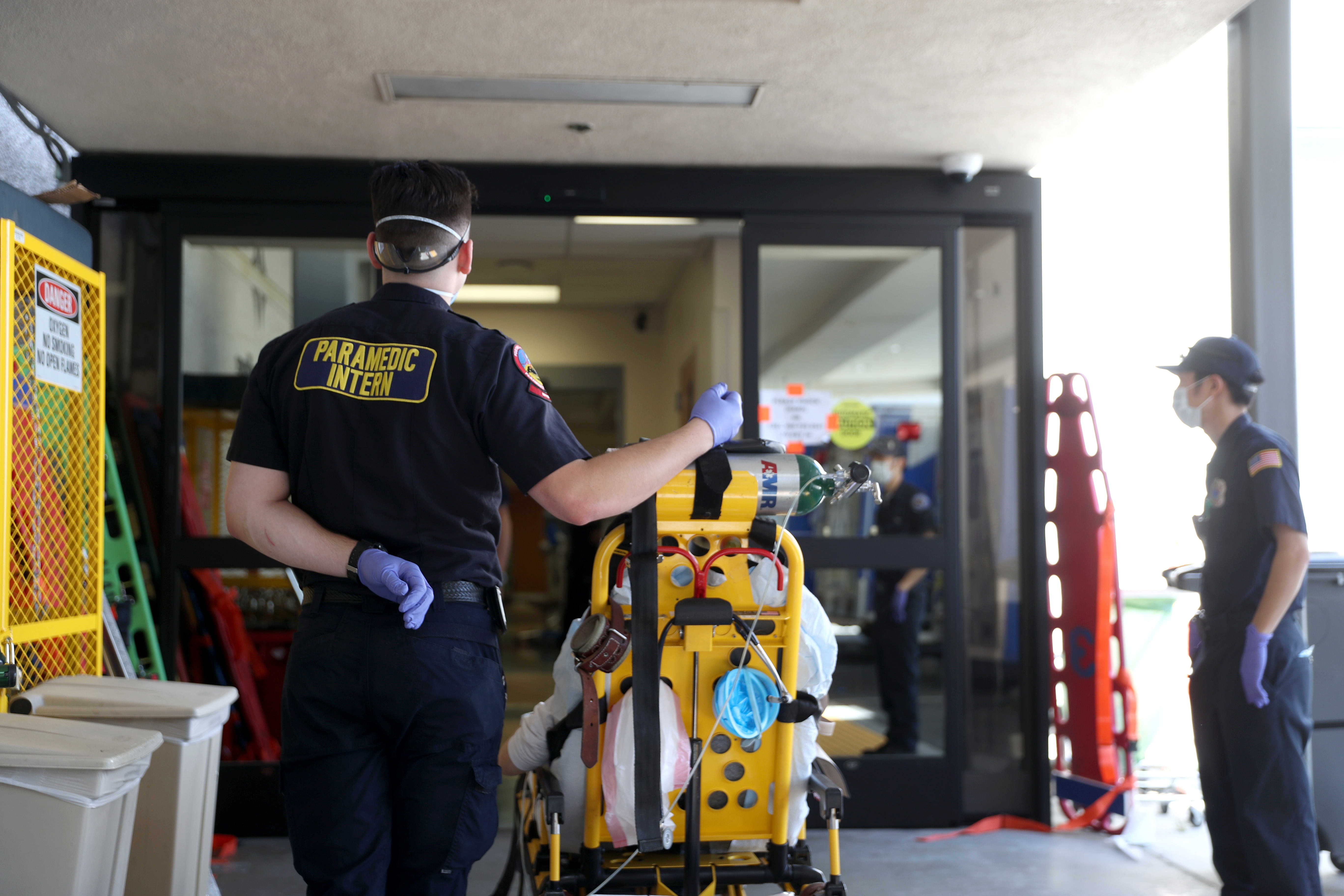
Paramedics wait to bring a patient into the emergency room at Regional Medical Center on May 21, 2020 in San Jose, California.
Justin Sullivan | Getty Images
With an acceleration of coronavirus headlines starting to weigh on the U.S. stock market, strategists say they are now paying attention to a more refined set of disease metrics to guide their trading strategy.
Though reports of new infections in Florida, Texas, California and Arizona have captured headlines over the last week, Wall Street pros say they’re less focused on case growth and more concerned with net hospitalizations and deaths since they’re better representations for stress on the health-care system.
In the original outbreak, “new case growth at that time was directly associated with an increase in hospitalization rates on a net basis,” Evercore ISI strategist Dennis DeBusschere said Tuesday. “In hindsight, we know that that was a lot of 65-year-old-plus people. You also had specific areas like nursing homes as a significant part of that.”
The strategist explained that since the median age of confirmed Covid-19 infections in March was higher than those confirmed in June, some are hopeful that the current spike in infections among younger Americans may not lead to as much stress at the nation’s hospitals and cause the economy to shut down once again.
Indeed, the daily median age for new Covid-19 patients in Florida cases has fallen from 55 years in March to under 35 in June, according to Evercore data. That’s compared to the state’s median hospitalization age of 66 years and median age of death of 80.
Even Dr. Scott Gottlieb, the former Food and Drug Administration Commissioner, allowed himself some optimism regarding these numbers this week.
“As the hospitals fill up with Covid patients, we’re going to see how much the mortality rate declines as a function of it’s a younger cohort, younger age cohort, but also we have better treatment,” he told CNBC on Tuesday.
On a national level, those between the ages of 18 years old and 64 years old account for 74.3% of total U.S. infections, but just 19.8% of deaths, according to the Centers for Disease Control and Prevention. Those 65 years or older comprise 20% of cases, but 78.6% of deaths.
Source: Fundstrat Global Advisors, COVID-19 Tracking Project.
Such demographic statistics are important, DeBusschere said, since it was fear of overwhelming U.S. health-care capacity that compelled state governors in March to impose business closures.
New York Gov. Andrew Cuomo voiced those concerns almost verbatim in an announcement on March 16, when he declared that the state’s gyms and movie theaters would close.
“Our primary goal right now is to slow the spread of this virus so that the wave of new infections doesn’t crash our health-care system, and everyone agrees social distancing is the best way to do that,” Cuomo said at the time.
And while health officials say lockdown measures were instrumental in reducing hospitalizations, they had the negative side effect of bringing the U.S. economy to an abrupt halt and sending the S&P 500 down 30% in March.
But if a younger cohort and a somewhat helpful cocktail of treatments can keep hospitalizations and deaths at bay, the market continue to churn at current levels as investors take a wait-and-see approach, DeBusschere said.
“Overall, while cases are increasing, the demographic skew has helped keep hospitalization, ICU, and fatality numbers low. The vast majority of new cases are in younger age cohorts while hospitalizations and deaths are heavily skewed towards the elderly,” Evercore’s DeBusschere wrote Thursday. That’s “why another round of official economic shutdowns remains unlikely.”
To be sure, it’s likely too early to say for sure that the decline in the median age of newly infected persons in states like Florida will result in a lower rate of mortality. White House health advisor Dr. Anthony Fauci warned lawmakers as much this week when he noted on Tuesday that deaths lag hospitalization and infection statistics.
That could lead to more negative outcomes in the weeks to come such as increases in the daily new reported deaths, which jumped higher on June 23 and prompted a wave of selling this week.
The S&P 500 and Dow Jones Industrial Average are both down about 2% on the week as stocks of companies that would benefit most under economic reopening swooned amid investor fears of stricter quarantine policy.
American Airlines, Wynn Resorts and Norwegian Cruise Line, three stocks exposed to trends in the travel industry, were leading the S&P 500 lower this week with loss of 22.9%, 17% and 16.6% respectively.
Still, Fundstrat Head of Research Tom Lee reiterated DeBusschere’s focus on hospitalizations and said, while new cases are never good, a Covid surge among younger people is enough reason to hope for a milder impact on the nation’s health infrastructure.
An “important point to emphasize is that the surge in cases is not leading to the same surge in hospitalizations and cases,” Lee wrote Thursday. “Sure, in many states, hospitalizations are up, but this is a far cry from the ICU/emergency room surge seen in NY tristate.”
“If hospitalizations trends track cases with a lower ‘co-efficient’ (meaning, for each new case, there are fewer hospitalizations), then this is a positive development. COVID-19 remains a mysterious disease, so we would not want to make that conjecture that this will continue,” he added.
Read more of CNBC’s coronavirus coverage here. Subscribe to CNBC PRO for exclusive insights and analysis, and live business day programming from around the world.



